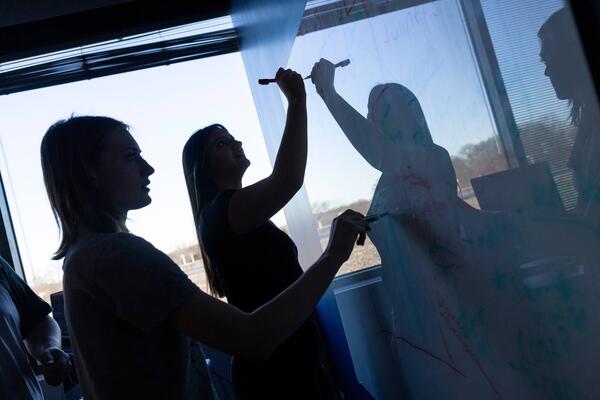In online nursing education, a “nest” is more than a metaphor—it is a learning environment where students feel safe, supported, and guided as they prepare to enter professional practice. Drawing on my experience as a nursing educator, I developed the NEST framework—Nurturing, Esteeming and Encouraging, Supporting with Sensitive Listening, and Trust-building—to help faculty of any discipline create virtual classrooms where can students thrive. This framework provides actionable strategies that foster engagement, confidence, and professional growth, ensuring students succeed academically while cultivating the values and skills essential not only for nursing but for any profession they pursue.
Nurturing: Creating Safety and Connection in Virtual Classrooms
Nurturing in online education involves creating conditions where students feel seen, valued, and supported. Practical strategies include:
- Personalized reminders about assignments and deadlines
- Recognition of standout work or consistent effort
- Targeted assistance during challenging weeks
- Mid-week check-ins at key points (weeks 3, 6, and near the end of the course)
- Weekly announcements that reassure students they are not navigating the course alone and invite collaboration
These intentional acts convey: you matter, I care about you and your growth, and I am here to support you. By nurturing students online, faculty shift from simply delivering content to facilitating discovery and meaningful learning, helping students internalize that professional values—like compassion, competence, collaboration, and understanding—are essential in nursing and in any career they pursue.
Esteeming and Encouraging: Recognizing Strengths Online
Esteeming affirms each student’s value, while encouragement supports their belief in their ability to meet challenges. In virtual classrooms, this can include:
- Highlighting thoughtful discussion board posts
- Sending brief messages to recognize consistent effort
- Acknowledging creative approaches to assignments
- Reframing mistakes as opportunities for growth
Esteeming and encouraging students create a learning environment that feels less like a points-based performance and more like a journey of discovery. Students flourish when they feel recognized and supported—lessons they carry into professional nursing practice and other careers, where acknowledging the efforts of colleagues and clients enhances collaboration, engagement, and overall effectiveness.
Supporting and Listening: Meeting Students Where They Are
Support in online education involves being present and responsive. Sensitive listening attends to both spoken and unspoken concerns. Many nursing students balance coursework, clinical hours, employment, and family responsibilities. Practical strategies include:
- Timely, compassionate responses to emails
- Flexibility with deadlines when life circumstances intervene
- Online opportunities for students to share experiences and reflect
- Structured activities like mid-week check-ins, collaborative discussions, and reflective journaling
These strategies model sensitive listening and support—skills students carry into nursing and other professional settings, fostering trust, collaboration, and meaningful connections with colleagues, clients, and communities.
Trust-Building: The Cornerstone of Engagement in Online Learning
Trust is essential for engagement in online learning. Students participate fully when they believe instructors are fair, consistent, and invested in their success. Trust is fostered online through:
- Clear, consistent communication
- Well-structured, predictable course design
- Timely feedback that reassures students they are supported
- Avoiding inconsistencies in messaging or directions, which can undermine trust
By demonstrating reliability and responsiveness, faculty model behaviors students can emulate in professional practice, strengthening relationships with patients and colleagues.
Carrying the NEST Forward: From Online Classroom to Professional Practice
The NEST framework extends beyond online classrooms. Students carry lessons of being nurtured, esteemed, supported, listened to, and trusted into every professional interaction. Faculty who model NEST help students internalize not just knowledge and skills, but the values that define my field of nursing practice—such as compassionate care, encouragement, support, sensitive listening, and trust—valuable principles that apply across any discipline and profession.
Students may leave the online course, but they take with them habits of mind and heart cultivated in the nest: confidence from nurturing, resilience from encouragement, empathy shaped by listening, and integrity rooted in trust. By creating an online nest where learning flourishes, faculty prepare students not only to succeed academically but to enrich the lives of those they serve—whether colleagues, clients, or communities in any professional field.
Sandra L. Daisley, MSN, RN, is a nursing educator with extensive experience in online pre-licensure programs. She is passionate about creating student-centered learning environments that foster engagement, professional growth, and the development of compassionate, competent nurses. Sandy is the creator of the NEST framework, a practical model for supporting students in virtual classrooms.







